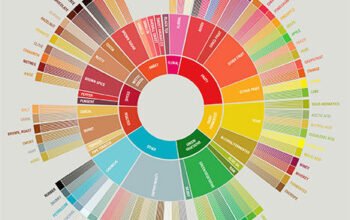Today, we’ll be taking a closer look at the fascinating world of coffee beans and their ever-changing price. From the humble origins of the bean to the intricate factors that influence its value, we’ll explore the intriguing journey that these little beans make from crop to cup. Join us on this enlightening adventure as we uncover the mysteries behind the fluctuating coffee beans price and gain a deeper understanding of the economics behind everyone’s favorite morning brew. So grab your favorite mug and let’s dive into this captivating exploration!
Factors Affecting Coffee Beans Price
Coffee beans are a fascinating commodity that undergoes various factors that influence their price. Understanding these factors is crucial for coffee producers, distributors, and consumers alike. In this article, we will explore the different aspects that contribute to the fluctuating prices of coffee beans. From supply and demand dynamics to weather conditions, political and economic factors, currency exchange rates, market speculation, coffee quality, production costs, roasting, distribution, and the impact of COVID-19, we will delve into each topic to provide a comprehensive overview.
Supply and Demand
The fundamental concept of supply and demand plays a vital role in determining the price of coffee beans. Global coffee production, coffee harvesting and processing, and coffee consumption trends all impact the market dynamics. When the supply of coffee beans is high relative to demand, prices tend to decline. Conversely, when demand outpaces supply, prices tend to rise. This delicate balance between the supply and demand for coffee beans is influenced by various factors that we will now explore.
Global Coffee Production
Coffee is grown in several countries globally, with the biggest producers being Brazil, Vietnam, Colombia, and Ethiopia, among others. Changes in global coffee production due to factors such as weather conditions, pest infestations, and disease outbreaks can have a significant impact on prices. If a major coffee-producing country experiences a decrease in production, it can lead to a scarcity of supply and subsequently push prices upward.
Coffee Harvesting and Processing
The method and efficiency of coffee harvesting and processing also affect the supply of coffee beans. Manual harvesting requires a considerable amount of labor and can be time-consuming, while mechanized harvesting can be more efficient but costly. Additionally, processing methods, such as washed or natural processing, can impact the taste and quality of the coffee, which in turn can influence its pricing in the market.
Coffee Consumption Trends
The demand for coffee is influenced by consumption trends and preferences. As coffee culture expands and evolves globally, societal shifts, such as the growing popularity of specialty coffees and the rise of coffee shops, impact the demand for different types of coffee beans. Changes in consumer preferences, including the increasing demand for organic or fair-trade coffee, can also affect the price of coffee beans.
Weather Conditions
Coffee crops are highly sensitive to weather conditions, and any adverse climate events can have a significant impact on coffee bean prices. Climate change, with its unpredictable weather patterns, poses a substantial threat to coffee production. Rising temperatures, prolonged droughts, increased rainfall, or extreme weather events like hurricanes can lead to crop failures or reduced yields. These weather-related challenges may result in a decrease in the availability of coffee beans, causing prices to escalate.
Impact of Climate Change
Climate change poses a long-term threat to coffee production. Rising temperatures can shift suitable coffee-growing regions and adversely affect the quality and flavor of the beans. Additionally, changes in rainfall patterns can disrupt the natural growth cycles of coffee plants and increase the risk of diseases and pests. Such climate-related challenges can ultimately impact the price and availability of coffee beans in the market.
Natural Disasters
Coffee-growing regions are susceptible to natural disasters such as hurricanes, floods, and earthquakes. These catastrophes can cause extensive damage to coffee plantations, destroying crops and disrupting supply chains. When the production capacity is hampered due to natural disasters, coffee bean prices can spike due to limited availability and higher production costs to recover from the damage.
Political and Economic Factors
The coffee industry is influenced by political and economic factors that shape trade policies and regulations, the role of coffee trade organizations, and the overall economic stability of coffee-producing countries.
Trade Policies and Regulations
Government policies and regulations, including tariffs, trade agreements, and export/import restrictions, can impact the flow and pricing of coffee beans. Trade barriers or changes in trade policies can disrupt the supply chain, leading to fluctuations in coffee prices. Political decisions related to international trade can create uncertainties that affect market dynamics and ultimately influence the price of coffee beans.
Coffee Trade Organizations
Coffee trade organizations, such as the International Coffee Organization (ICO), play a significant role in regulating the global coffee market. These organizations work to promote fair trade practices, establish quality standards, and provide market insights. Their policies and initiatives can impact the supply chain and influence the pricing of coffee beans.
Economic Stability
The economic stability of coffee-producing countries also plays a crucial role in determining coffee bean prices. Socio-political stability, inflation rates, and labor conditions affect production costs, which subsequently impact the market price. Economic fluctuations, such as currency devaluation or inflation, can lead to changes in the cost of production and potentially influence coffee bean prices.
Currency Exchange Rates
Currency exchange rates play a significant role in the global coffee trade. Fluctuations in exchange rates between countries can affect the competitiveness of coffee exports and imports. When the domestic currency of a coffee-producing country strengthens against the currencies of major coffee-consuming countries, the cost of coffee beans in the global market may increase. Conversely, if the domestic currency weakens, it can make coffee beans more affordable for international buyers, potentially impacting prices.
Impact of Fluctuating Exchange Rates
Coffee trade heavily relies on international transactions, where exchange rates can greatly impact the financial dynamics. Exporting countries earn revenue in foreign currency, and fluctuations in exchange rates can affect their profitability. Changes in exchange rates not only impact the income of coffee producers but also influence the pricing strategies of coffee traders and retailers in different countries.
International Trade
The coffee industry heavily depends on international trade, and exchange rates influence the competitiveness of coffee beans in the global market. When a country’s currency strengthens, it may become more expensive for international buyers, potentially affecting the demand for its coffee beans. Conversely, a weaker currency can make coffee beans more attractive in terms of affordability, thereby potentially boosting demand and prices.
Market Speculation and Investment
Market speculation and investment activities can introduce volatility to coffee bean prices. Speculators use financial instruments like futures contracts to bet on the future price movements of coffee beans. Their activities can lead to short-term price fluctuations, as they speculate and trade based on market sentiment and anticipated supply and demand dynamics.
Role of Speculators
Speculators aim to profit from price changes in coffee bean markets by taking positions based on their analysis or beliefs about future market trends. While their activities can introduce short-term price volatility, they also provide liquidity to the market and allow coffee producers and consumers to manage their price risks. However, excessive speculation or market manipulation can lead to distortions in coffee bean prices.
Investment Opportunities
Investors looking to diversify their portfolios often consider commodities like coffee beans. The coffee market offers investment opportunities through various financial instruments, including coffee futures contracts, exchange-traded funds (ETFs), or shares in coffee-related companies. The interest and capital flow from investors can impact the pricing dynamics of coffee beans in the market.
Commodity Exchanges
Commodity exchanges, such as the Intercontinental Exchange (ICE) and the London Metal Exchange (LME), provide platforms for trading coffee futures contracts. These exchanges facilitate price discovery, risk management, and supply chain hedging for participants in the coffee market. The activities and trading volumes on commodity exchanges can influence the price movements of coffee beans.
Coffee Quality and Specialty Coffee Market
The quality of coffee beans and the specialty coffee market play a significant role in determining their price. Specialty coffees, known for their unique flavor profiles and higher quality standards, often command premium prices in the market.
Premium Pricing
Specialty coffees, which undergo rigorous quality assessments and have distinct flavor characteristics, can fetch higher prices compared to commodity-grade coffee beans. The meticulous farming, processing, and roasting techniques employed in producing specialty coffee contribute to its increased value. Consumers who appreciate unique taste experiences are willing to pay a premium for these high-quality coffee beans.
Certifications and Labels
Certifications and labels, such as Fair Trade, Organic, Rainforest Alliance, or Direct Trade, signify specific production practices and sustainability efforts. These labels can influence consumer preferences and willingness to pay higher prices for coffee beans that meet specific criteria. The demand for certified or labeled coffee beans plays a role in pricing, as these products often come with additional production costs or farmer premiums.
Consumer Preferences
Changing consumer preferences have a significant influence on coffee bean prices. As consumers become more knowledgeable about different coffee origins, flavor profiles, and production methods, their preferences evolve accordingly. Factors such as ethical sourcing, sustainable farming practices, or supporting local small-scale farmers can drive consumer decisions and their willingness to pay higher prices for coffee beans aligned with their values.
Production Costs and Farming Practices
The costs associated with coffee production, including labor, fertilizers, pesticides, and farming practices, impact the price of coffee beans.
Labor Costs
The labor-intensive nature of coffee production and harvesting contributes significantly to the overall production costs. Wages and labor conditions vary across coffee-producing regions, with some countries having higher labor costs than others. Changes in labor costs can impact the pricing dynamics of coffee beans, especially when they rise due to labor disputes or increased labor regulations.
Fertilizers and Pesticides
The use of fertilizers and pesticides in coffee farming affects the cost of production and can impact the pricing of coffee beans. Organic or sustainable farming practices, which minimize or eliminate the use of chemical inputs, can result in higher production costs. These additional expenses may be reflected in the price of coffee beans, especially when there is a demand for environmentally friendly or organic products.
Sustainable Farming
The growing demand for sustainably produced coffee has implications for production costs and, consequently, coffee bean prices. Sustainable farming practices, such as shade-grown cultivation, water conservation, or regenerative agriculture, often require additional investments or modifications to traditional farming methods. These changes can impact the economics of coffee production and contribute to variations in coffee bean prices.
Roasting and Distribution
The processes involved in roasting and distributing coffee beans also contribute to their final pricing.
Roasting Techniques and Equipment
Roasting coffee beans is a critical step in bringing out their desired flavors and aromas. Different roasting techniques and equipment can vary in cost, affecting the overall production expenses. Specialty roasters that focus on small-batch roasting or employ more meticulous and time-consuming roasting methods may incur higher costs, which can be passed on to the end consumer through the pricing of coffee beans.
Packaging and Transport Costs
The packaging and transport of coffee beans also impact their pricing. Packaging materials, branding, and labels add to the overall cost of production. Additionally, the distance between the coffee-producing regions and the end consumers can influence transportation costs. These factors, combined with fluctuating fuel prices and logistics challenges, contribute to the final price of coffee beans.
Wholesale and Retail Markup
As coffee beans move through the supply chain, various intermediaries add their margins to cover their costs and generate profits. Coffee wholesalers and retailers play a role in determining the final price that consumers pay. Their overhead expenses, marketing efforts, and desired profit margins influence the markup on coffee beans. The retail pricing further incorporates factors such as location, competition, and the perceived value of the coffee brand.
Impact of COVID-19 on Coffee Beans Price
The ongoing COVID-19 pandemic has had a significant impact on the coffee industry, affecting both the demand and supply sides of the market.
Decline in Demand
The closure of cafes, restaurants, and other foodservice establishments during lockdowns and social distancing measures led to a decline in coffee consumption. With fewer people commuting to work or socializing outside their homes, the demand for coffee beans decreased, affecting prices. The gradual recovery of the coffee industry will depend on the pace of reopening economies and the return of consumer habits.
Disruption of Supply Chains
Restrictions on international travel, temporary shutdowns of coffee farms and processing facilities, and disruptions in transportation and logistics affected the global coffee supply chain. These disruptions led to temporary shortages or delays in the availability of coffee beans, contributing to fluctuations in prices. The resilience of the supply chain and its ability to adapt to changing circumstances will greatly influence the stability of coffee bean prices.
Shift to Online Sales
With physical distancing measures in place, the coffee industry witnessed a significant shift toward online sales. Coffee roasters and retailers had to adapt their business models to meet the changing consumer behavior, with an increased focus on e-commerce platforms and direct-to-consumer shipping. This shift in the sales channel impacted pricing strategies and the overall accessibility of coffee beans for consumers.
In conclusion, the price of coffee beans is influenced by a complex interplay of factors. Supply and demand dynamics, weather conditions, political and economic factors, currency exchange rates, market speculation, coffee quality, production costs, roasting, distribution, and the impact of COVID-19 all contribute to the fluctuating prices of coffee beans. Understanding these factors is crucial for all stakeholders in the coffee industry to navigate and adapt to the ever-changing market conditions.



